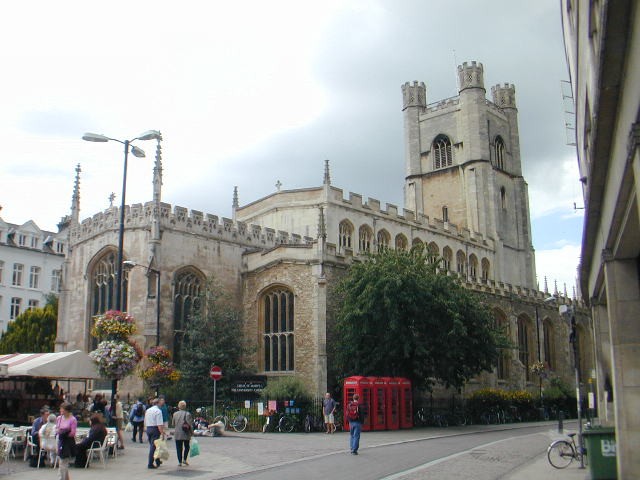

This morning we left York and spent much of the day driving south to London, with a stop in Cambridge along the way. Like Oxford, which we visited on our second day in Britain, this is the home of one of the world's great universities. I mentioned some of the "town vs. gown" tension in Oxford; the academic community at Cambridge began with a group of scholars who moved here from Oxford to escape that! We had about an hour and a half to get lunch and begin to explore the town after we arrived, and then we gathered at Great St. Mary's, the University's church (in the picture above), to warm up for an informal concert.
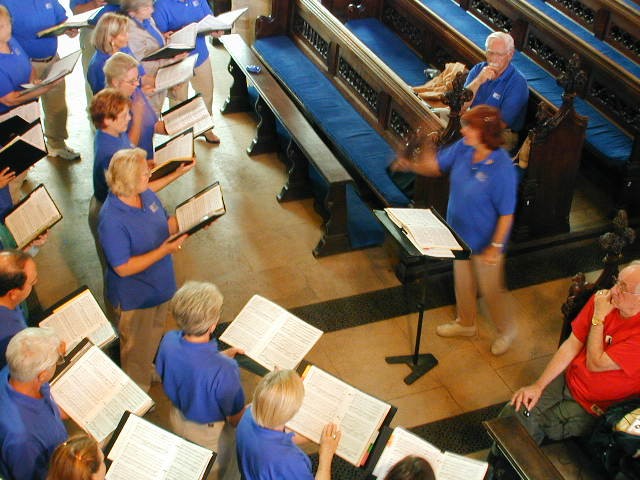
We parked purses, coats, etc. up on the balconies of the church with Jim Belt; once again I handed our digital camera to Steve Campbell, who wandered all over the church photographing the choir and the audience throughout the concert. Here's his view from the balcony with Jim.
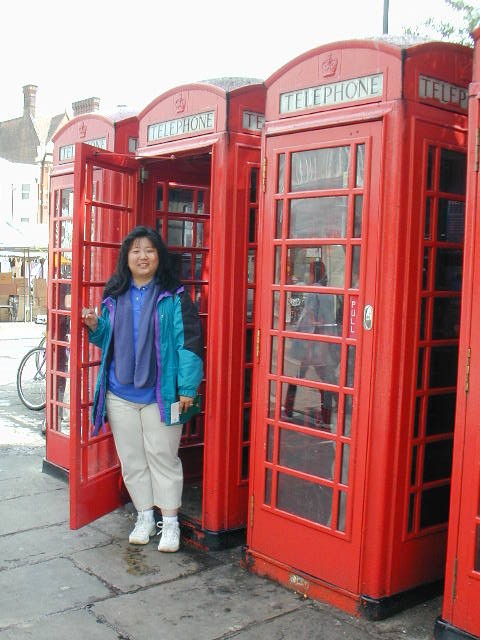
Several choir members had friends in or near London whom they planned to meet that evening, or reservations at a restaurant, or other plans for after our arrival in the evening, so it was good that there were phone booths nearby to call ahead after the concert. (We had some friends to meet, which kept us out late, and that's why I waited until the next day to write and post this day's webpage.) Before Cheryl stepped in, we checked very carefully to make sure this wasn't Dr. Who's TARDIS...
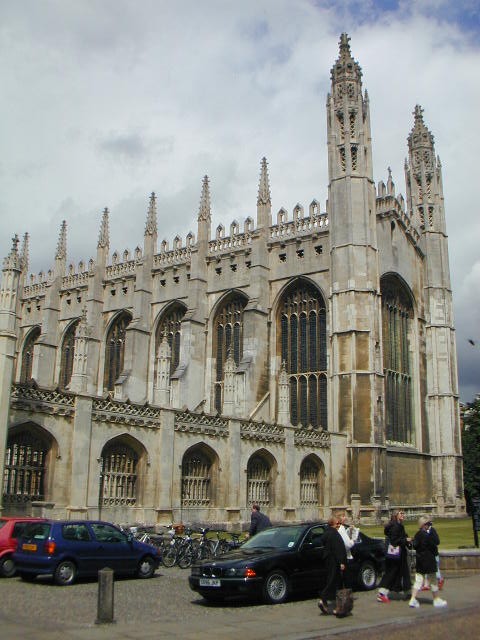
Like Oxford, Cambridge University consists of many different colleges, all founded at different times, from the 13th to the 20th centuries. (The most recent, I think, was Gurton College, which was founded in the early 20th century for women only, since the rest of the colleges didn't go co-ed until the 1960s and 1970s.) After the concert we had another couple of hours to explore, and many of us went to look at the chapel of King's College, pictured here, which is reputedly one of the most beautiful among the colleges' chapels.
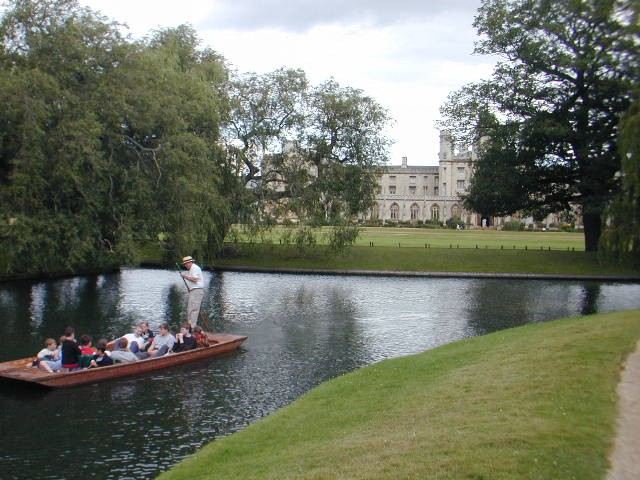
Cheryl and I didn't have time to see the chapel, because we spent much of the afternoon wandering around The Backs. These are beautifully manicured lawns that run behind several of the colleges to the river Cam; here we are looking across to St. John's College. (The Romans built a bridge over the river, and called the bridge Cam; later the name was mistakenly applied to the river.) There are several bridges, some beautiful and some sort of utilitarian, over the Cam in town; one here was modeled on the Bridge of Sighs in Venice (others we've seen that were similar in form, or at least in name, were in Oxford and Chester). We were trying to get a vantage point on that from the adjacent St. John's Bridge, but we kept getting blocked by gates and finally we learned that the bridge we were trying to reach was closed for a film crew. Oh well... On the river you can see a punt, which were available for rides; I didn't hear that David Evans, et al., were able to sink one here to match their score in Oxford!

Continuing along the road to London, we stopped just outside Cambridge to visit the American Cemetery and Memorial, where many of the Americans based in Great Britain who died in the European Theater of World War II are buried on land lent in perpetuity by the University. There are 3812 headstones, and a wall (to the right in the photo) records the names, ranks, units, and home states of 5126 who were either missing in action or buried or lost at sea. In front of the wall are statues representing a soldier, an airman, a sailor, and a Coast Guardsman, and at the far end is a memorial chapel.
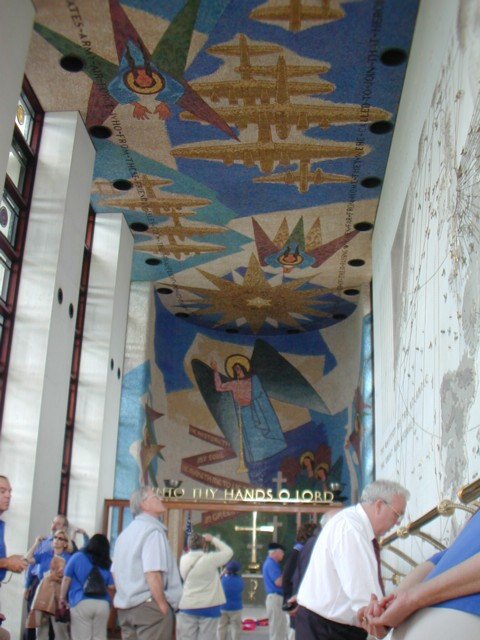
The ceiling of the chapel is a mosaic that I found extremely moving; it depicts American military aircraft flying in the company of angels toward an Archangel holding the trumpet of the Resurrection, and lower on the walls are a Navy ship and an amphibious rescue aircraft. The lettering around the edge of the ceiling reads "In proud and grateful memory of those men of the United States Army Air Force who from these friendly isles flew their final flight and met their God. They knew not the hour, the day, nor the manner of their passing when, far from home, they were called to join that heroic band of airmen who had gone before. May they rest in peace." The aircraft in the mosaic are specific, recognizable models (B-17s, a P-38, P-51s, and several others), rather than an artist's generic representation of just "airplanes"; and somehow that brought home to me the fact that those commemorated here were specific individuals, with individual stories and individual families left behind. We stayed until the memorial grounds closed, and then continued to London; this stop was not on our itinerary, but I think everyone felt it was well worth the time we spent there.
 To
Thursday, 11 July 2002
To
Thursday, 11 July 2002 Back
to choir tour itinerary
Back
to choir tour itinerarynew 11 July 2002, revised 21 July 2002